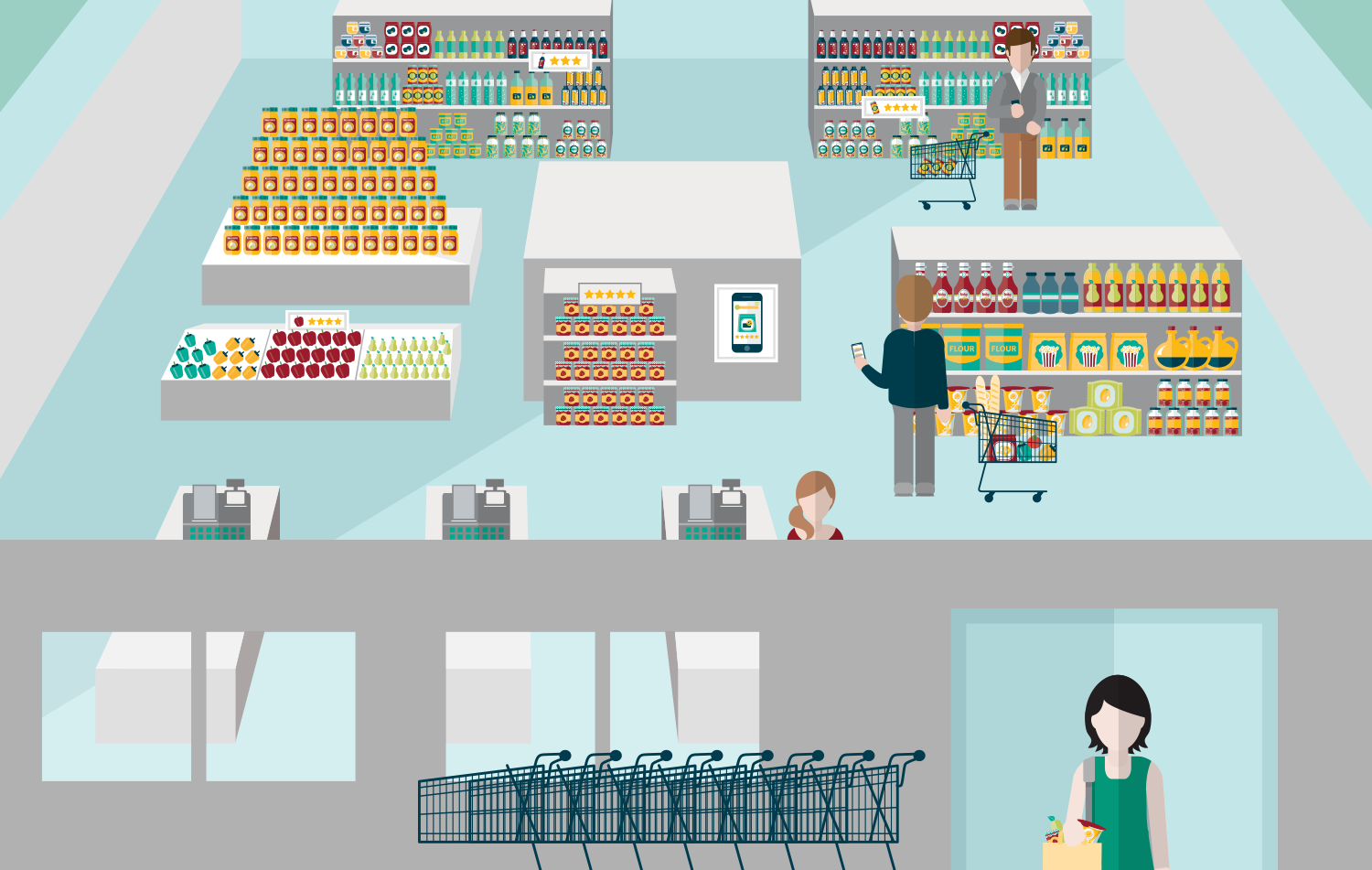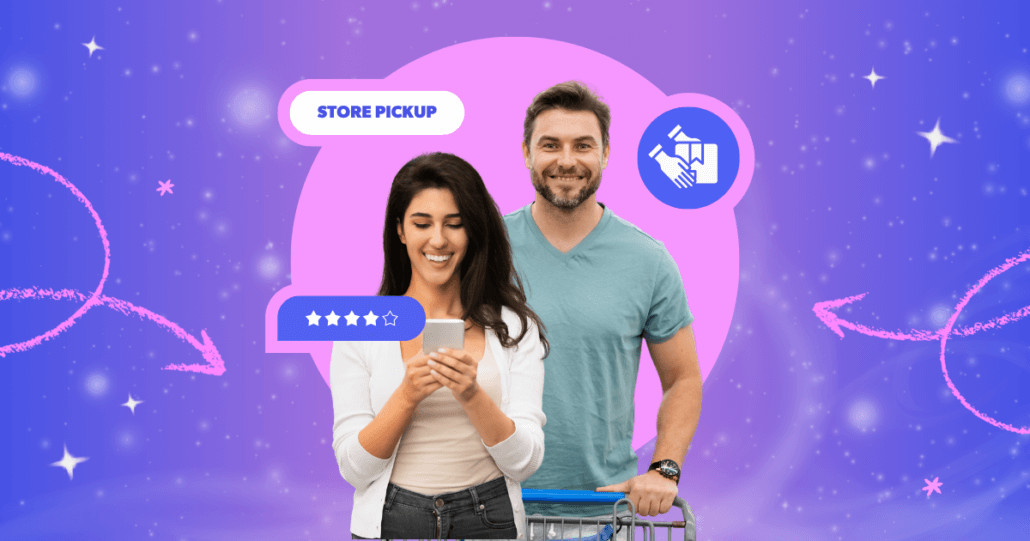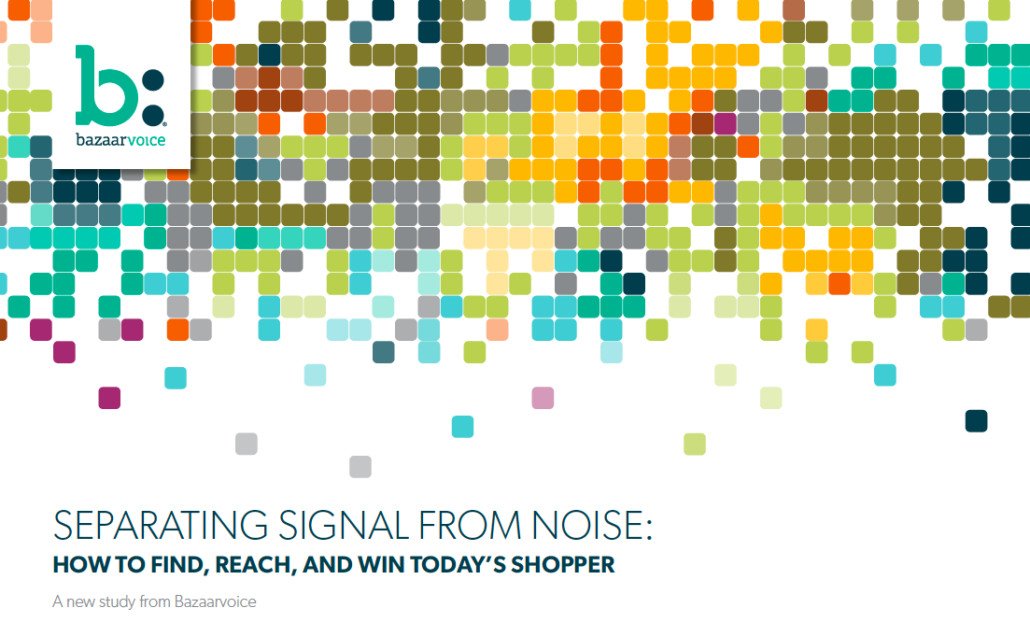March 29, 2017
These days it seems every week we hear about a grocery powerhouse partnering with a more sophisticated delivery service like Instacart, Amazon Fresh, or Google Express. This week, it was Costco and Shipt launching home delivery in 50 stores to 30M households, and, last month, Kroger and Uber announced tests in several markets. If you’re thinking: Uber? That ride sharing company that has been facing PR nightmares for the past 2 months? Yes, that Uber.
While it is encouraging to see that brick-and-mortar grocery is attempting to rise to the expectations of the 21st century consumer, these partnerships are reactionary and only serve as a quick fix for the larger issue of e-Commerce. These partnerships are a short-term gain that puts all the long-term value and growth into the hands of the online delivery companies. Why are grocers so willing to relinquish their shoppers? Is a company like Kroger, with $100B revenue in 2016, without the resources to tackle this problem themselves?
Many grocers are stuck between a rock and a hard place. They are unsure how to keep their relationship with customers who are increasingly turning to online services, and also compete with offerings from leaders like Amazon and Walmart in an increasingly digital space.
Crawl before you walk
There is so much buzz around new players like Amazon disrupting the space, that pressure has caused traditional grocers to make decisions in haste. What grocery retailers should realize is that it is not a zero-sum game when competing with digital services. Traditional grocers have a significant upper hand, thanks to established shopping habits, millions of loyal shoppers, and brick and mortar real estate.
Adapting to consumer change can come in the form of a crawl-walk-run approach. Before rolling out a full in-house delivery service, retail grocery has much more complex, behind-the-scenes headaches to address with inventory, supply chain, etc. Though shifting a traditionally offline company into a new digital space can sometimes feel like trying to move a mountain, there is a simple two-step process that they can do to initially address the need for an e-Commerce solution.
1. Satisfy your shoppers’ hunger for product information
Consumers have access to – and expect – a lot of information. Now more than ever, they are turning to online sources for information about the products they buy and the places they shop. Between 1975 and 2008, the number of products in the average supermarket was around 8,948. Today, that average is 47,000. Because there are so many more choices consumers have in aisle, they need help from other consumers — in the form of reviews and questions & answers — to make purchase decisions. This hunger for product information is amplified by the shift in consumer focus towards health, wellness, and sustainability of food; in short, today’s shoppers are more mindful about what they purchase. More and more of these ‘consultations’ are made in-aisle and on mobile devices: 82% of consumers research products in-aisle before making a purchase.
To keep up with the online grocery Joneses, grocers need to understand that their shoppers are researching food items at home and in-aisle. By having product details and consumer-generated content (CGC) like ratings, reviews, and photos available on their website, traditional grocers can create a positive online experience that drives shoppers to make offline, in-store purchases. If shoppers can’t find the information they need about a product on a grocer’s’ website, they will look for that information — and make purchases — elsewhere. Just as other industries, like home goods and apparel, have taken advantage of CGC to create better online and offline shopping experiences, so must the grocery industry.
2. Meet your customers online
Let’s face it, everyone hates crowded aisles, out-of-stock items, and long lines. As a result, forward thinking retailers have launched programs allowing consumers to purchase groceries online and pick them up in-store to improve the shopping experience. This ‘click-and-collect’ option is this simplest in-house service to stand-up, yet many grocers are slow to take advantage of this method. No surprise — Amazon and Bazaarvoice client Walmart both offer these services.
Many traditional grocers push back against investment in e-Commerce with, “My shopper is the 40-year-old mother shopping for the week and doesn’t go online,” or “My shoppers actually like coming to my stores”. However, they make the mistake of assuming that the rise in online grocery is isolated to wealthy millennials, when, in reality, it’s happening across the board. As with most industries that have seen significant growth, convenience trumps tradition. Older and less affluent shoppers represent a significant portion of online food sales. Everyone, regardless of age and income, is shopping for groceries online, and once retailers accept this fact, they can begin to better address their customers’ needs.

Top500Guide.com, 2015 demographic data provided by Millward Brown Digital
Rather than looking to outsource to another company, grocers should take responsibility for their own online presence and grocery delivery service. Coming up with a solution for e-Commerce, though the ultimate goal, can be time consuming and daunting. Allowing shoppers to purchase online and pick up in-store is the first step towards meeting your customers online and scratching that consumer itch.
David v. Goliath
The grocery industry is in a time of transition, and it will be interesting to see what grocery shopping will look like in 5 years and beyond. Amazon and Walmart/Jet.com, the two leaders pushing towards the next frontier in grocery, were both able to get first mover advantage in the online grocery space because they understood what their shoppers wanted. Having had years of experience with CGC in their other verticals like apparel and electronics, they know their customers and what it takes to win them online. They’ve moved fast to address changing consumer preferences, so fast that Amazon is expected to have 26% market share by this year. Walmart is on pace to secure 15% in that same timeframe, so these two companies will capture nearly a third of the online grocery market by the end of 2017.
If they hope to compete, traditional grocers must evolve and react to new consumer behavior and demands that are blurring the lines between the offline and online shopper journeys. To learn more about the transformations in the grocery industry and how we’ve helped our brick-and-mortar grocery clients use CGC to keep pace in the grocery delivery space, download our latest retail grocery ebook.





